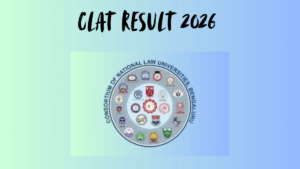
Ncert Solutions for Class 12 Biology Chapter 8 in English
Adda 247 provides NCERT Solutions for Class 12 Biology chapter 8 NCERT solutions which is for the students who want to go ahead in life and achieve great marks in their examinations. The NCERT Solutions for class 12 are provided by the teachers who are experts of their subjects. The solutions are set according to the rules formulated by the NCERT class 12 biology and in the language that can be understood by every student. By these reading the solutions students can build up a strong base easily. The NCERT class 12 Biology solutions covers the chapters 1 to 16 with the important questions and the answers in a detailed way.
Examinations can be threatening for some people, a proper learning of the concepts is the key to crack the examination. Students rely on the solutions of the NCERT provided by Adda 247. The solutions are formulated by the experts of the subjects who have tremendous knowledge in their subjects.
These NCERT Solutions of class 12 chapter 7 help the students to get familiarized with the textbooks. The students can access the solutions anywhere while browsing the web easily. The solutions are very precise and accurate.
NCERT Solutions for Class 12 Biology Chapter 8 – Human health and diseases
The chapter provides information about Human health and diseases. Health can be defined as a state of complete physical, mental and social well-being. Health is affected by three factors- Genetic disorders- disorders which the child inherits from parents from birth. Infections- caused due to pathogens. Life style- includes the habits that we have or lack such as intake of food and water, rest and exercise which we give to our body etc. When People are healthy they are more efficient to work which increases productivity and brings economic prosperity.
Important Question of Ncert Solutions for Class 12 Biology chapter 8
Question 1. What are the various public health measures, which you would suggest as safeguard against infectious diseases?
Answer: Public health measures are preventive measures which are taken to check the spread of various infectious diseases. These measures should be taken to reduce the contact with infectious agents.
Some of these methods are:
(1) Maintenance of personal and public hygiene: It is one of the most important methods of preventing infectious diseases. This measure includes maintaining a clean body, consumption of healthy and nutritious food, drinking clean water, etc. Public hygienic includes proper disposal of waste material, excreta, periodic cleaning, and disinfection of water reservoirs.
(2) Isolation: To prevent the spread of air-borne diseases such as pneumonia, chicken pox, tuberculosis, etc., it is essential to keep the infected person in isolation to reduce the chances of spreading these diseases.
(3) Vaccination: Vaccination is the protection of the body from communicable diseases by administering some agent that mimics the microbe inside the body. It helps in providing passive immunization to the body. Several vaccines are available against many diseases such as tetanus, polio, measles, mumps, etc.
(4) Vector Eradication: Various diseases such as malaria, filariasis, dengue, and chikungunya spread through vectors. Thus, these diseases can be prevented by providing a clean environment and by preventing the breeding of mosquitoes. This can be achieved by not allowing water to stagnate around residential areas. Also, measures like regular cleaning of coolers, use of mosquito nets and insecticides such as malathion in drains, ponds, etc. can be undertaken to ensure a healthy environment. Introducing Laxvivorous fish such as Gambusia in ponds also controls the breeding of mosquito larvae in stagnant water.
Question 2. In which way has the study of biology helped us to control infectious diseases?
Answer: Biological research and tools has helped a lot to control and eradicate communicable diseases. It helps us in various ways, some of them are:
(a) To know the nature of disease.
(b) To find out the mode of transmission of disease.
(c) To provide treatment and cure the infected person by medicines.
(d) Provide vaccines and immunization treatment for preventing the further spread of disease.
Question 3. How does the transmission of each of the following diseases take place?
(a) Amoebiasis (b) Malaria (c) Ascariasis (d) Pneumonia
Answer:
| Disease | Mode of transmission |
| (a) Amoebiasis | Direct and oral. The tetranucleate cysts are ingested with contaminated food and water. |
| (b) Malaria | Indirect and inoculative. The sporozoites are introduced along with the saliva of vector female Anopheles mosquitoes. |
| (c) Ascariasis | Direct and oral. Capsules with second juveniles are ingested with contaminated food and water. |
| (d) Pneumonia | Air borne or through droplet infection or aerosols or contaminated utensils. Bacterial cysts are spread by sputum of the patients. |
Question 4. What measure would you take to prevent water-borne diseases?
Answer: Drinking contaminated water is one of the main reason for water born diseases such as typhoid, cholera etc. The measures that can be taken to prevent water-borne diseases are as follows
- To prevent these diseases we should dispose of sewage, excreta etc. properly.
- We should check our water reservoirs regularly.
- We should consume clean, pure, contamination free water only.
Question 5. Discuss with your teacher what does ‘a suitable gene’ mean, in the context of DNA vaccines.
Answer: Suitable gene refers to a specific segment of DNA, which is given to a person in the form of vaccine. This segment of DNA produces a specific protein, which kills the disease causing pathogen in the body, hence, providing immunity to the person.
Question 6. Name the primary and secondary lymphoid organs.
Answer: The primary lymphoid organs are bone marrow and thymus where immature lymphocytes differentiate into antigen sensitive lymphocytes.
Bone marrow : Bone marrow is the main lymphoid organ where all blood cells including lymphocytes are formed. Maturation of B-lymphocyte occurs here.
Thymus : Thymus is the site for T-lymphocytes maturation. Thymus is situated near the heart.
The secondary lymphoid organs are spleen, lymph nodes, tonsils,Payer’s patches of small intestine and appendix.
Spleen : It is a bean-shaped organ which is the largest single mass of lymphoid tissue in the body. In foetus the spleen produces all type of blood cells but in adult it only produces lymphocytes.
Lymph nodes : These are small solid structures found at intervals along the lymphatic system. They are composed of lymphoid tissue and act as filters for the lymph. Lymph nodes also produce lymphocytes and plasma cells.
Tonsils : Usually there are only 6 tonsils. They act as filters to protect the body from bacteria and aid in the formation of white blood cells.
Peter’s patches : They are clusters of lymph nodules found in small intestine along the ileum. They produce lymphocytes.
Mucosal-Associated Lymphoid Tissue (MALT) : MALT are significant aggregation of lymphoid tissues which are seen in relation to the mucosa of the major tracts like respiratory, alimentary canal and urinogenital tracts. It constitute about 50% of the lymphoid tissue in human body. They don’t serve as filters of lymph. They are centres of lymphocytes production. Phagocytic macrophages and dendritic cells are also present.
Question 7. The following are some well-known abbreviations, which have been used in this chapter. Expand each one to its full form:
(a) MALT (b) CMI (c) AIDS (d) NACO (e) HIV
Answer:
| Abbreviation | Expanded form |
| (a) MALT | Mucosal-Associated Lymphoid Tissue. |
| (b) CMI | Cell-Mediated Immunity. |
| (c) AIDS | Acquired Immuno-Deficiency Syndrome. |
| (d) NACO | “National AIDS Control Organization. |
| (e) HIV | Human Immuno-deficiency Virus. |
Question 8. Differentiate the following and give examples of each:
(a) Innate and acquired immunity (b) Active and passive immunity
Answer: (a) Innate and acquired immunity
| Innate immunity | Acquired immunity |
| It is a non−pathogen specific type of defense mechanism. | It is a pathogen specific type of defense mechanism. |
| It is inherited from parents and protects the individual since birth. | It is acquired after the birth of an individual. |
| It operates by providing barriers against the entry of foreign infectious agents. | It operates by producing primary and secondary responses, which are mediated by B−lymphocytes and T-lymphocytes. |
| It does not have a specific memory. | It is characterized by an immunological memory. |
(b) Active and passive immunity
| Active immunity | Passive immunity |
| It is a type of acquired immunity in which the body produces its own antibodies against disease-causing antigens. | It is a type of acquired immunity in which readymade antibodies are transferred from one individual to another. |
| It has a long lasting effect. | It does not have long lasting effect. |
| It is slow. It takes time in producing antibodies and giving responses. | It is fast. It provides immediate relief. |
| Injecting microbes through vaccination inside the body is an example of active immunity. | Transfer of antibodies present in the mother’s milk to the infant is an example of passive immunity. |
Question 10. What are the various routes by which transmission of human immunodeficiency virus takes place?
Answer: AIDS (Acquired Immuno-Deficiency Syndrome) is caused by the Human immunodeficiency virus (HIV).
It has the following modes of transmission:
Unprotected sexual contact with an infected person.
Transfusion of blood from a healthy to an infected person.
Sharing infected needles and syringes.
From an infected mother to a child through the placenta.
Question 11. What is the mechanism by which the AIDS virus causes deficiency of immune system of the infected person?
Answer: In infected person, HIV enters into macrophages where virus is replicated and gets incorporated with host cell’s DNA with the help of enzyme RNA transcriptase. Infected host cells produce virus particles so that host’s macrophages act as HIV factors. At the same time, HIV enters into helper T-lymphocytes and replicates to form progeny virus. They again attack blood and helper T-lymphocytes . This disease in T-helper leads to deficient immunity in infected persons.
Features of the NCERT Solutions for Class 12 Biology Chapter 8 – Human health and diseases
NCERT Solutions for class 12 biology chapter 7 have been answered based on the important information on the question.
- The columns are used wherever necessary.
- Solutions are solved point wise and accurately answered point to point.
Frequently Asked Questions on NCERT Solutions for Class 12 Biology Chapter 8
What are the advantages of referring NCERT Solutions for class 12 Biology chapter 8?
Students referring the ncert solutions for class 11 biology chapter 8 pdf download by Adda 247 find the solutions helpful during the exams. The solutions are prepared by the experts in an interactive manner keeping in mind the students. The students’ perspective is kept in mind while preparing the solutions. It helps in completing the syllabus on time and also provides notes for the revision prior to the exam.
What are the advantages of referring NCERT in competitive exams like JEE and AIPMT?
Most of the competitive exams like NEET, JEE etc. follow the basic NCERT books for designing their question papers. NCERT serves as the base for every book prepared for NEET and JEE. The competitive exams are based on the CBSE syllabus applied in XI and XII classes and NCERT books strictly follow CBSE syllabus. In addition to this, NCERT books play an important role in clearing out the theoretical concepts. Every topic given in NCERT books is explained in such a way to help students make their basics and fundamentals strong and clear.
How To Use NCERT Solutions For Class 12 Biology?
- Study the chapter topic wise and understand the various concepts.
- First, try to solve the questions by yourself and then look at the solutions.
- Use them as a reference guide while revising the chapter.
- If you get stuck at any question, you can check the step by step solution from the PDF from ncert solutions for class 11 biology chapter 2 pdf download by Adda 247.
.
Is it mandatory to solve all the NCERT questions mentioned at the end of each chapter?
The questions and answers mentioned in NCERT textbooks at the end of each chapter are quite important not only for examination but also for understanding the concepts in a better way. These questions aim to test the students’ understanding and learning over the topics that they have learned in the chapter.
Solving the NCERT exercise problems will help to
- clear all the concepts and formulae you learned in a chapter
- get comfortable with different types of questions that might be asked in exams
- get enough practice which is key to succeed in Mathematics exam
- improve your accuracy and speed
What are the important concepts covered in the Chapter 8 of NCERT Solutions for Class 12 Biology?
The concepts involved in the chapter 8 of NCERT Solutions are –
8.1 – Common Diseases in Humans
8.2 – Immunity
8.3 – AIDS
8.4 – Cancer
8.5 – Drugs and Alcohol Abuse.
These concepts are created by the faculty at Adda 247. The solutions are available at Adda 247 in the PDF format which can be downloaded by the students.
| NCERT Solutions for Class 12 Biology Chapter-wise |
|
Chapter 1: Sexual Reproduction in Flowering Plants
|
|
Chapter 2: Human Reproduction
|
|
Chapter 3: Reproductive Health
|
|
Chapter 4: Principles of Inheritance and Variation
|
|
Chapter 5: Molecular Basis of Inheritance
|
|
Chapter 6: Evolution
|
|
Chapter 7: Human Health and Disease
|
|
Chapter 8: Microbes in Human Welfare
|
|
Chapter 9 : Biotechnology: Principles and Processes
|
|
Chapter 10: Biotechnology and its Applications
|
|
Chapter 11: Organisms and Populations
|
|
Chapter 12: Ecosystem
|
|
Chapter 13: Biodiversity and Conservation
|










 NCHMCT JEE 2026: Exam Date, Online Regis...
NCHMCT JEE 2026: Exam Date, Online Regis...
 CUET PG 2026 Registration Started at exa...
CUET PG 2026 Registration Started at exa...
 CLAT Result 2026 Release Date, How to Do...
CLAT Result 2026 Release Date, How to Do...






